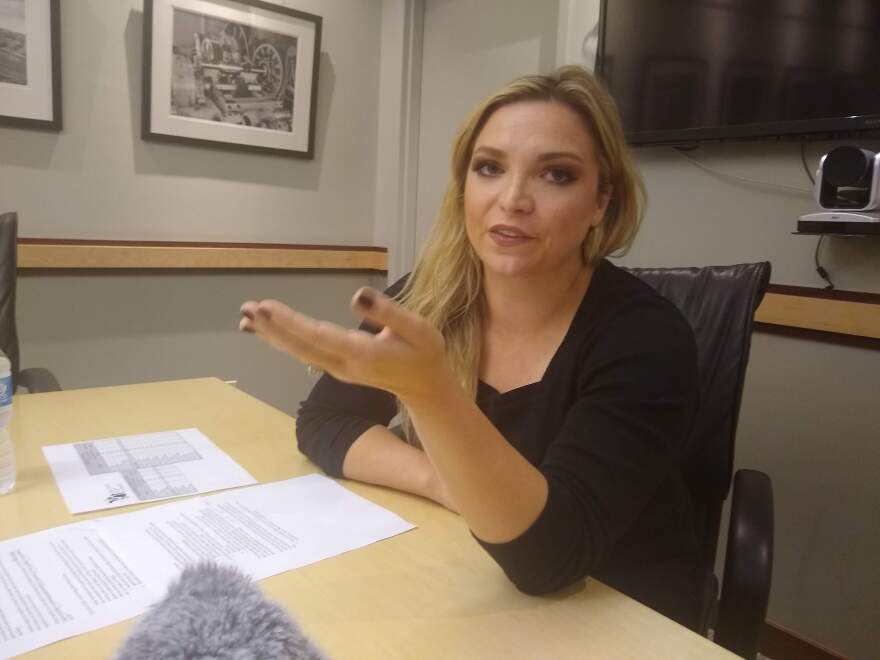When Gov. Tony Evers took office in January, he could have put his priorities in a lot of different places.
But he chose to put a large amount of political muscle into improving drinking water in Wisconsin.
Just 15 days after he was inaugurated in January, he proclaimed 2019 the "Year of Clean Drinking Water” for the state.
Nine months after that promise, his administration has made progress on regulating perfluoroalkyl and polyfluoroalkyl substances (PFAS), addressing nitrates, and tackling lead pipes.
But he’s also faced resistance on some of his drinking water plans from Republicans and industry groups.
In a one-on-one interview in the governor’s office this month, we wanted to ask first about PFAS, which has drawn special attention in the greater Rhinelander area over the last several months.
The family of manmade chemicals may be linked to health issues. Rhinelander is among the communities which has discovered heightened levels of PFAS in drinking water.
“Back when I got a degree in chemistry from UW-Madison, we didn’t talk about PFAS,” Evers admitted. “In fact, I don’t even know if they knew what PFAS were at that point.”
But in the last few decades, and especially the last year, much of Wisconsin has become familiar with the term.
In August, Evers signed Executive Order 40, directing the DNR to create a public information website on PFAS, set up a coordinating council, and create regulatory standards for groundwater and surface water.
“People will not stand for having water that’s contaminated with them that they’re drinking,” Evers said. “That’s not going to happen.”
The state Department of Health Services recommended a limit of 20 parts per trillion (ppt) for PFOA and PFOS, the two best-known PFAS compounds.
That’s a standard an industry group said could deeply hurt Wisconsin businesses.
“It struck me as an incredibly restrictive number,” said Lane Ruhland, the Director of Environmental and Energy Policy at Wisconsin Manufacturers and Commerce (WMC). “The EPA is saying that there are no

known health effects below the 70 parts per trillion number. Twenty parts per trillion seems incredibly restrictive.”
WMC joined with other industry partners to form a new group monitoring PFAS regulations, the Water Quality Coalition.
Ruhland points to New York State, where the capital cost estimate for municipal water systems to comply with new PFAS recommendations exceeds $850 million.
“We’re looking at, potentially, hundreds of millions, maybe even billions of costs to our economy to actually achieve those standards,” Ruhland said.
Those numbers, the Water Quality Coalition said, could devastate Wisconsin’s economy.
“When organizations talk about devastating impacts, I think of families that may drink contaminated that has PFAS in it. That’s devastating too,” Evers responded. “Those same people that claim that 20 is too much, it will be devastating, are they okay with drinking 20 in their own homes? I’d guess not.”
In response, WMC’s Nick Novak said he would have “no problem” drinking water that tested at 20 ppt, since the EPA has calculated 70 ppt as the safe limit.
“This, once again, seems to be a way for this administration to regulate industry based on fear and not science,” Novak wrote in an email.
Ruhland said she’s also concerned the PFAS Coordinating Council, ordered by Evers, will only include government regulators and no industry, environmental, or general public representatives.
Both the DNR and governor’s office said they couldn’t provide information yet on membership on the council.
Regulating PFAS in drinking water also means exploring where the contaminants come from.
In July, the DNR sent a letter to 125 municipal wastewater treatment plants in the state. It asked the plants to voluntarily test their incoming water for PFAS to help the DNR figure out how widespread the issue is, and which industries might be the biggest contributors.
The DNR is confident industry is the main emitter of PFAS, and the municipal plants were chosen because they handle wastewater for large industries.
“Municipal treatment plants serve as a pinch point through which many industries discharge their wastewater, so it’s an efficient starting point for us,” said DNR Wastewater Section Chief Jason Knutson. “If we find PFAS at a municipal treatment plant’s discharge or influent to the plant, we can go upstream in the sewers and sample at industries that discharge to the sewers as well, and try to address PFAS at the source.”

The deadline for communities to report test results is in the next few weeks. Knutson says participation has been mixed.
As part of the Year of Clean Drinking Water, the Evers administration also hopes to drive down nitrate levels in groundwater and drinking water in rural Wisconsin.
Nitrates are the state’s most widespread groundwater contaminant. About 90 percent come from farming.
“I think we’re in a better place than we have been in a long time because farmers take this seriously, and I think they’re beginning to use the practices that we need to see in the state,” Evers said.
Concentrated Animal Feeding Operations (CAFOs), farms with more than 1,000 animals, are often targeted because of their manure output.
But the WMC’s Ruhland disputes that idea.
“Where these large farms are, the water is much less contaminated,” she said. “If you look at the data, these large farms, or these CAFOs, are doing a really good job at protecting the environment.”
According to the Wisconsin Dairy Alliance, of the ten counties with the most CAFOs, only one (Dane) cracks the top 20 on the list of counties with the most contaminated wells.
At the Capitol, Evers has already faced political headwinds on some of his water policies.
But he said, despite the slogan, he knows that the push for clean drinking water will take much more than just a year.
Evers is ready to keep it a priority.
“It’s a big issue in the state of Wisconsin, and it’s a real simple issue. People like to have clean drinking water,” he said. “Who doesn’t want it? Who doesn’t need it?"
_






